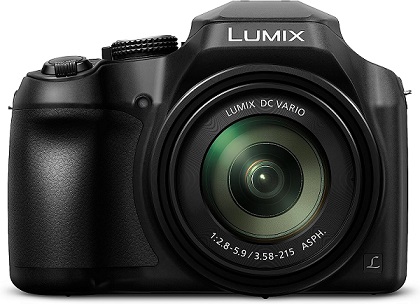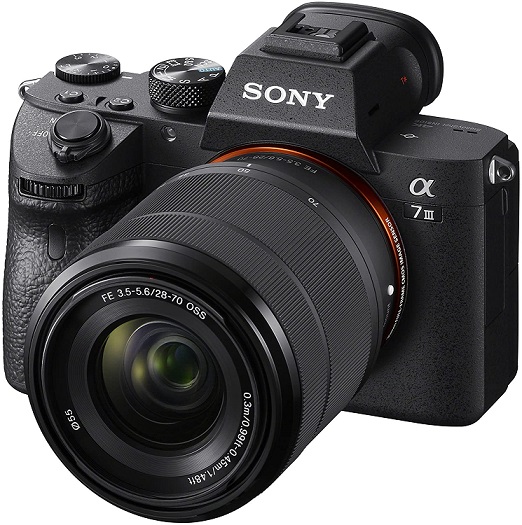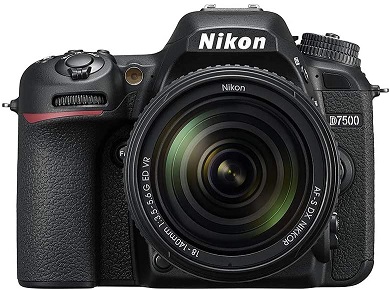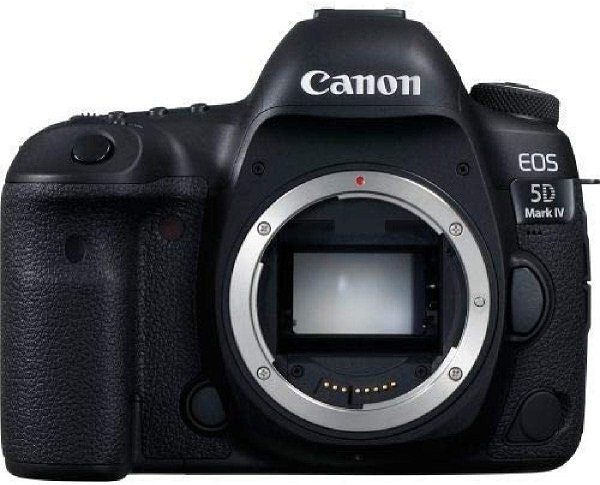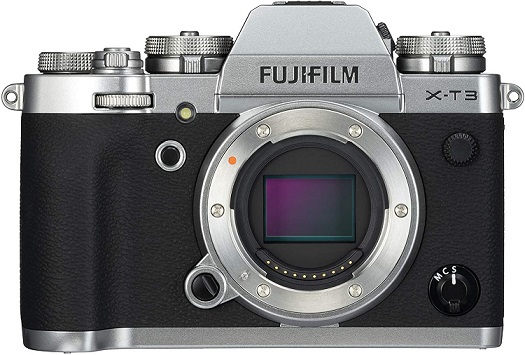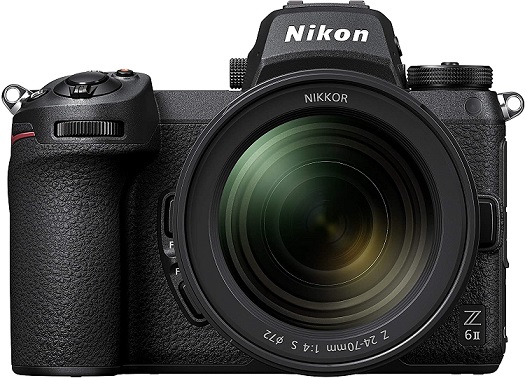Have you ever had trouble taking a great indoor portrait, or found that your photos of cityscapes at night are blurry? Poor lighting can greatly affect the quality of your photos, resulting in grainy images and unwanted noise. If you want sharp, clear pictures in low-light conditions, it’s important to choose a camera designed for those situations. Luckily, there are many cameras available that perform well in low light.
But Before you buy, check for these Primary Factors:
- Sensor Size: Larger sensors generally capture more light, leading to better low-light performance and reduced noise in images. So, look for cameras with larger sensor sizes, such as full-frame or APS-C sensors.
- Image Stabilization: Find a camera that has in-body or lens-based image stabilization to reduce the impact of camera shake.
- Low-Light Modes: Some cameras come equipped with specialized modes that optimize settings for low-light shooting. Prefer models with specific low-light shooting modes or features, such as night mode.
- Video Capabilities: For those interested in low-light videography, a camera with excellent low-light video performance is crucial. Consider features like 4K recording and slow-motion capabilities.
- Panasonic Low Light Camera – All Rounder
- Sony Low Light Camera – Best for Filmakers
- Nikon Low Light Camera – Best for Videography
- Canon Low Light Camera – Best for Professionals
- Fujifilm Low Light Camera – Best Mid-Range Option
- Nikon Z 6II Low Light Camera – Best for Advanced Photography
Outline
ToggleBest Low Light Cameras Table
| Best Low Light Camera | Lens | Viewfinder Display | ISO Range | Buy Now |
|---|---|---|---|---|
| Panasonic Low Light Camera | 20 - 120 mm Lens | 3 Inches LCD | ISO 80 to 6400 | Check On Amazon |
| Sony Low Light Camera | 28 - 70 mm Lens | 3 Inches LCD | ISO 50 to 204800 | Check On Amazon |
| Nikon Low Light Camera | 18 - 140 mm Lens | 3.2 Inches LCD | ISO 100 to 51200 | Check On Amazon |
| Canon Low Light Camera | --- | 3.2 Inches LCD | ISO 100 to 3200 | Check On Amazon |
| Fujifilm Low Light Camera | --- | 3 Inches LCD | ISO 160 to 12800 | Check On Amazon |
| Nikon Z 6II Low Light Camera | 24 - 70 mm Lens | 3.2 Inches LCD | ISO 100 to 51200 | Check On Amazon |
Best Low Light Cameras Reviews
1. Panasonic Low Light Camera
The Panasonic Lumix is a versatile point-and-shoot camera designed for both enthusiasts and travelers. It boasts an 18.1-megapixel MOS sensor and a 60X zoom DC VARIO lens with a focal range of 20-1200mm, ensuring exceptional clarity and stability in shots. Equipped with Power O.I.S. technology, it delivers sharp images even in low-light conditions.
The camera features a high-resolution 1,170K-dot viewfinder and a touch-enabled 3-inch LCD for clear visibility in various conditions. With 4K video recording and 4K Photo mode, you can capture stunning Ultra HD footage and extract high-resolution photos from your videos seamlessly.
Specifications
|
Feature |
Details |
|
Maximum Webcam Image Resolution |
18.1 MP |
|
Photo Sensor Size |
1/2.3-inch |
|
Image Stabilization |
Optical |
|
Max Shutter Speed |
30 seconds |
|
Min Shutter Speed |
1/16000 seconds |
|
Metering Description |
Center-Weighted Average, Multi, Spot |
|
Exposure Control Type |
Manual and Automatic |
|
Form Factor |
Compact |
|
Resolution |
High-resolution 4K video and photo capabilities |
|
Connectivity |
Wi-Fi connectivity, HDMI D (Micro), Micro USB, and USB 2.0 ports |
What We Like
- 60X Zoom DC VARIO Lens (20-1200mm range) for capturing distant subjects
- High-resolution viewfinder and 3-inch LCD for clarity in bright sunlight
- Post Focus feature for adjusting focus after the shot, and Focus Stacking for depth of field control
- Ergonomic design for comfortable handling during prolonged use
- 4K video recording and 4K Photo mode, along with Optical Image Stabilizer for sharp images in low-light conditions
What We Dislike
- The learning curve with features may require some time for beginners.
- Initial setup for optimal settings may be time-consuming.
- High-resolution 4K videos may result in large file sizes requiring additional storage.
2. Sony Low Light Camera
This state-of-the-art full-frame mirrorless camera, the a7 III by Sony, caters to both professional photographers and hobbyists alike with its advanced features. It boasts a 24.2MP full-frame Exmor R CMOS sensor and the BIONZ X image processor, guaranteeing superb image quality even in dim lighting. With a 693-point phase-detection autofocus system, it ensures swift and accurate focus tracking for both photos and videos.
Included in the package is a versatile 28-70mm lens, coupled with 5-axis in-body image stabilization, ensuring crisp and steady shots in various shooting conditions. The camera sports a tiltable 3-inch LCD screen for easy shooting from different angles, and its touchscreen interface provides swift access to settings. Furthermore, it supports 4K HDR video recording, elevating its cinematic capabilities.
Specifications
|
Feature |
Details |
|
Image Sensor Type |
Full-frame Exmor R CMOS sensor |
|
Megapixels |
24.2 MP |
|
ISO Range |
100-51200 (expandable to 50-204800) |
|
Autofocus Points |
693 phase-detection points |
|
LCD Size |
3 inches |
|
Video Recording |
4K HDR |
|
Connectivity |
Dual SD card slots, Micro USB. |
What We Like
- Exceptional image quality with the 24.2MP full-frame sensor.
- Wide ISO range for superior low-light performance.
- Fast and accurate autofocus system with 693 phase-detection points.
- 5-axis in-body image stabilization for steady shots in any situation.
What We Dislike
- Camera menu system can be complex for those new to advanced photography.
- Limited touchscreen functionality in some settings.
- Battery life may be a concern for extended shooting sessions; consider carrying spare batteries.
3. Nikon Low Light Camera
Using large apertures in dim lighting may result in a narrow depth of field, making it tricky to keep all subjects in focus. However, the Nikon D7500, tailored for both hobbyists and advanced photographers, stands out in this regard. It boasts a 20.9-megapixel sensor, a powerful 5-image processor, and an extensive ISO range, ensuring exceptional image quality in diverse lighting situations. With its 51-point autofocus system, precision is guaranteed, while the 18-140mm VR lens enhances flexibility.
Featuring a 3.2-inch tilting touchscreen, the camera facilitates effortless navigation and composition. Its prowess extends to videography, offering 4K UHD recording and in-camera time-lapse creation. Built sturdily and designed ergonomically, the D7500 is a dependable choice for various photographic endeavors.
Specifications
|
Feature |
Details |
|
Image Sensor Type |
DX-format CMOS sensor |
|
Megapixels |
20.9 MP |
|
ISO Range |
100-51200 (expandable to 50-1640000) |
|
Autofocus Points |
51 points (15 cross-type) |
|
In-Body Image Stabilization |
No |
|
LCD Size |
3.2 inches, tilting touchscreen |
|
Video Recording |
4K UHD |
|
Connectivity |
WiFi |
What We Like
- High-resolution sensor and powerful image-processing engine.
- Broad ISO range for excellent low-light performance.
- Fast and accurate autofocus system with 51 points.
- 4K UHD video recording and time-lapse capabilities.
What We Dislike
- Lack of in-body image stabilization.
- Limited touchscreen functionality in certain settings.
- The absence of a dual card slot may be a drawback for some professional users.
4. Canon Low Light Camera
The Canon low light camera is a flagship full-frame DSLR camera known for its exceptional image quality, advanced features, and durable build. It features a 30.4-megapixel CMOS sensor, a DIGIC 6+ processor, and a wide ISO range for excellent performance in various lighting conditions.
The camera boasts a 61-point autofocus system for swift and accurate focusing, along with Dual Pixel CMOS AF technology for smooth live view and video shooting. With 4K video recording, a 3.2-inch touchscreen, and a robust magnesium alloy body with weather sealing, the 5D Mark IV is a top choice for professionals and enthusiasts seeking high-performance photography and videography.
Specifications
|
Feature |
Details |
|
Image Sensor Type |
Full-frame CMOS sensor |
|
Megapixels |
30.4 MP |
|
ISO Range |
100-32000 (expandable to 50-102400) |
|
Autofocus Points |
61 points (41 cross-type) |
|
In-Body Image Stabilization |
No |
|
LCD Size |
3.2 inches, touchscreen |
|
Video Recording |
4K UHD |
|
Connectivity |
Wi-Fi, GPS |
What We Like
- Exceptional image quality with a high-resolution sensor.
- Advanced autofocus system with 61 points for precise focusing.
- 4K UHD video recording capability.
- Durable and weather-sealed magnesium alloy body.
What We Dislike
- Lack of in-body image stabilization.
- Slightly bulkier and heavier
5. Fujifilm Low Light Camera
The next item we’re spotlighting in our lineup of top low-light cameras hails from Fujifilm. Meet the X-T3, a mirrorless camera tailored for enthusiasts and pros alike. Boasting a 26.1-megapixel sensor, X-Processor 4, and built-in image stabilization, it ensures top-notch image quality and steadiness.
With 425 AF points, its autofocus system is swift and precise, while its ability to shoot 4K video at 60fps is impressive. Sporting an ergonomic design, user-friendly controls, and robust construction, coupled with a vari-angle touchscreen LCD and high-res electronic viewfinder, it’s a stellar choice for photography and videography enthusiasts alike.
Specifications
|
Feature |
Details |
|
Image Sensor Type |
X-Trans CMOS 4 |
|
Megapixels |
26.1 MP |
|
In-Body Image Stabilization |
Yes (up to 6.5 stops) |
|
Autofocus Points |
425 points |
|
LCD Size |
3 inches, vari-angle touchscreen |
|
Video Recording |
4K UHD at up to 60fps |
|
Connectivity |
Enhanced connectivity options |
What We Like
- In-body image stabilization for steady shots.
- Exceptional color reproduction and image quality.
- Advanced autofocus system with face and eye detection.
- Vari-angle touchscreen LCD for flexible composition.
What We Dislike
- Limited battery life compared to some competitors.
- Smaller APS-C sensor compared to full-frame options.
6. Nikon Z 6II Low Light Camera
For professionals and content creators, this advanced mirrorless camera by Nikon is optimized for low-light conditions. It comes equipped with a high-quality 24.5-megapixel backside-illuminated CMOS sensor and dual EXPEED 6 processors, ensuring exceptional image quality and overall performance. With an ISO range of 100-51,200 (expandable to 50-204,800), the camera adapts well to varying lighting situations.
The camera boasts a dual autofocus system featuring 273 phase-detection points, enabling rapid and precise focusing. Videographers can take advantage of its 4K UHD recording capabilities at up to 60fps, along with 5-axis in-body image stabilization for capturing steady shots. The durable magnesium alloy body is weather-sealed for added resilience, and the camera is designed with user convenience in mind, featuring a high-resolution electronic viewfinder and a tilting touchscreen LCD.
Specifications
|
Feature |
Details |
|
Image Sensor Type |
BSI CMOS |
|
Megapixels |
24.5 MP |
|
In-Body Image Stabilization |
Yes (5-axis) |
|
Autofocus Points |
273 on-sensor phase-detection points |
|
ISO Range |
100-51,200 (expandable to 50-204,800) |
|
Video Recording |
4K UHD at up to 60fps |
|
Connectivity |
Wireless connectivity |
What We Like
- Impressive image quality and low-light performance.
- Dual autofocus system for fast and accurate focusing.
- 5-axis in-body image stabilization for steady shots.
- Robust and weather-sealed magnesium alloy body.
What We Dislike
- Limited battery life during continuous shooting.
- Single card slots may be a drawback for some professionals.
- Slightly larger and heavier.
What Is A Low Light Camera?
A low-light camera, also known as a low-light or low-light level camera, is a type of camera specifically designed to perform well in environments with minimal lighting conditions. These cameras are engineered to capture clear and detailed images even when there is very little available light, such as during nighttime or in poorly lit indoor settings.
Benefits Of Using Low Light Cameras
Low-light cameras are advantageous for challenging lighting conditions in photography.
- Capture clear, detailed images in inadequate lighting (night-time, poorly lit indoor spaces)
- Higher ISO settings enable bright, sharp photos without additional light sources
- Larger sensors and wider aperture lenses contribute to better image quality
- Ideal for capturing natural scenes in true ambient light for authentic and mood-rich photographs
- Enhance video quality in low light, maintaining clarity and reducing graininess.
What To Look For In The Best Low-Light Cameras?
We highly recommend spending some time with our comprehensive buying guide for the best low-light cameras. This guide covers all these key aspects concisely. By reviewing our guide, you will gain a deeper understanding of low-light photography and be better equipped to select a camera that meets your specific needs and preferences.
1. ISO Sensitivity
The key to conquering low-light situations lies in a camera’s ISO sensitivity. Look for a camera that boasts a broad ISO range, ideally extending into the higher numbers (e.g., ISO 6400 and beyond).
This allows you to adapt to varying lighting conditions while maintaining image quality. Additionally, check for the camera’s performance at higher ISO settings to ensure minimal noise in low-light shots.
2. Sensor Size
Choosing a camera with a larger sensor can significantly improve low-light photography. The sensor size is crucial for a camera’s low-light performance. Bigger sensors capture more light, enhancing image quality in dim conditions. Full-frame sensors, the largest type, excel in low light by gathering more light and producing clearer and more detailed images.
Despite their superiority, cameras with full-frame sensors are often pricier. When selecting a camera for low-light photography, it’s essential to weigh the sensor size against your budget and photography requirements.
3. Lens Quality And Compatibility
The camera lens is crucial for low-light performance. A larger aperture (lower f-stop) allows more light, enhancing low-light capabilities. A wide aperture lens is great for sharp, bright photos in dim conditions. Check your camera’s compatibility with different lenses for flexibility in photography styles and lighting.
A lens with a wide aperture, denoted by a low f-number (e.g., f/1.4 or f/2.8), excels in low-light conditions. Consider lenses like Sigma 35mm f/1.4 Art or Tamron 24-70mm f/2.8 for versatility. Ensure your camera can use various lenses for diverse low-light situations.
4. Autofocus Capability
A camera’s low-light performance is greatly affected by its focus capability. To assess this, use the camera in different settings over time. Manufacturer specs provide an initial insight into focus abilities.
Initially, depends on the camera’s autofocus, which varies across brands and models, for decent shots. Autofocus is especially handy in video shooting for maintaining focus on moving subjects. High-end DSLR cameras typically excel in autofocus capabilities.
5. Image Processor
The image processor is essential, converting sensor data into a digital image. Understanding the processor provides insights into a camera’s performance in various conditions. Different brands have distinct processors in low-light cameras, leading to varied image qualities in similar conditions.
This makes the image processor a critical factor in choosing a camera, especially for low-light photography. It influences digital aspects such as contrast, saturation, and color accuracy. A superior processor is often more advantageous than a higher-resolution sensor.
6. Image Stabilization
This feature is important for reducing blurriness in low-light conditions, especially when shooting without a tripod. It reduces blur caused by hand movements. Choose cameras with built-in stabilization for clearer images in dim settings.
7. Video Capabilities
Video capabilities are a vital consideration for those who frequently shoot videos in low-light environments. When selecting a camera, it is crucial to assess its performance in dimly lit settings. This involves examining the quality of the video it produces under these conditions.
Cameras with superior low-light video capabilities typically feature higher ISO settings, which allow them to capture clearer and brighter footage even when there’s limited light. Such cameras can maintain video quality without significant noise or loss of detail, making them ideal for capturing videos in challenging lighting situations.
Low Light Camera Settings
When shooting in low-light conditions, adjusting your camera settings appropriately can help you capture better images. Here are some general tips for low-light camera settings:
- Use a wider aperture (lower f-stop): Open up your aperture to allow more light to reach the camera sensor. Choose a lower f-stop number (e.g., f/1.8, f/2.8) if your lens supports it.
- Increase ISO sensitivity: Boosting the ISO sensitivity makes your camera more light-sensitive, but be cautious as higher ISO values may introduce more noise into your images. Find a balance between ISO and image quality.
- Slow down the shutter speed: In low-light situations, you may need to use a slower shutter speed to allow more light into the camera. However, be careful not to use a shutter speed that is too slow, as it can result in motion blur. Use a tripod or stabilize your camera to prevent camera shake.
- Use a tripod or other stabilization: To compensate for slower shutter speeds and prevent blurry images due to camera shake, use a tripod or find a stable surface to place your camera.
- Shoot in RAW format: RAW files contain more data and offer more flexibility during post-processing. This can be especially useful when dealing with low-light situations, as you have more room to adjust exposure and reduce noise.
- Manual focus: In low light, autofocus may struggle. Consider switching to manual focus and use focus peaking (if available) to ensure your subject is sharp.
- Consider using a prime lens: Prime lenses with wider apertures (e.g., f/1.4, f/1.8) are often better suited for low-light conditions compared to zoom lenses. They allow more light to enter the camera and can produce sharper images.
- Use noise reduction cautiously: If you shoot at higher ISO settings and notice noise in your images, you can apply noise reduction in post-processing. However, be cautious not to overdo it, as excessive noise reduction can result in loss of detail.
Remember that the optimal settings can vary based on the specific conditions and the type of photography you’re doing. Experiment with these settings and adjust them based on the unique characteristics of your shooting environment.
Best Low Light Cameras – FAQs
Ans: Yes, most low-light cameras are versatile and can handle daylight conditions effectively, often with adjustable settings to manage different lighting scenarios.
Ans: Mirrorless cameras can be advantageous due to their typically larger sensors and advanced focusing systems, but many DSLRs also perform exceptionally well in low light.
Ans: Manual control is crucial for fine-tuning settings like exposure, focus, and ISO, giving photographers more flexibility to adapt to varying low light conditions.
Ans: Several brands are renowned for their low-light performance, including Canon, Nikon, Sony, and Fujifilm, each offering models with specific strengths.
Ans: Yes, but you will need a camera that is either waterproof or has a compatible waterproof housing, as low light conditions are common underwater.
Ans: Low light can impact color accuracy, but many low-light cameras have settings and features to compensate and improve color fidelity.
Ans: Some compact cameras have advanced features for low light, but generally, larger sensors found in DSLRs or mirrorless cameras offer better performance.
Conclusion
Photography has transformed from a hobby to a serious profession, thanks to DSLR cameras that empower enthusiasts in both photography and videography.
Specialized cameras designed for excellent low-light performance now eliminate the challenges posed by low-light conditions. With these cameras, photographers can unleash their creativity at any time, capturing breathtaking images regardless of the time of day.
Not sure which low-light camera is best for you? Check out our top three suggestions.
- If you are looking for the best low-light camera on a budget then, Panasonic Low Light Camera is an affordable, easy-to-use option with a 24-72mm lens and an ISO range up to 6400, suitable for low-light photography.
- For a high-end choice, the Sony Low Light Camera offers a vast ISO range up to 204800 and a 28-70mm lens, powered by the Sony Bionz X processor.
- For a low-light camera for video this Nikon Low Light Camera, known for its 18-140mm lens, excels in both 4K video and low light photography, backed by the EXPEED 5 processor.

